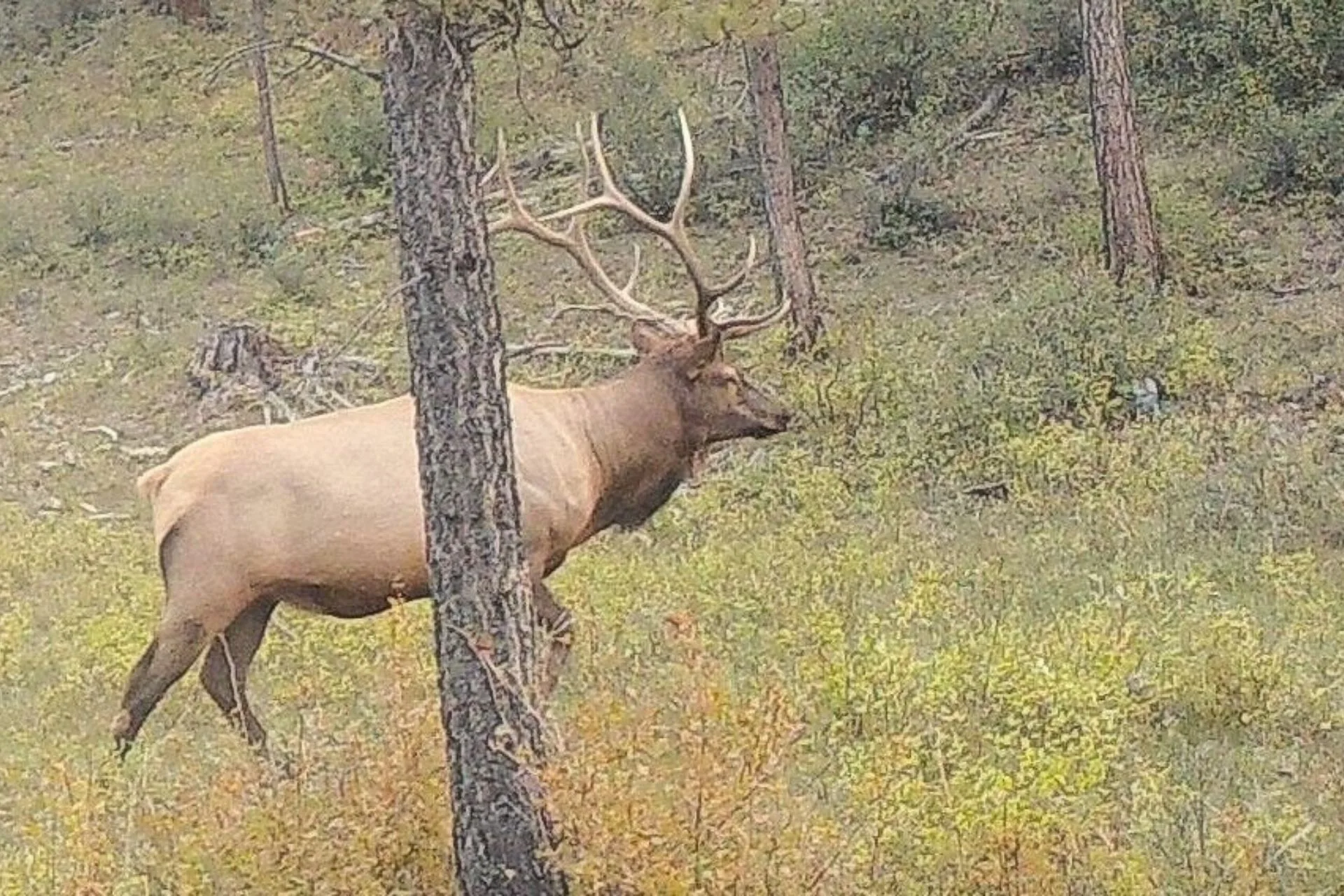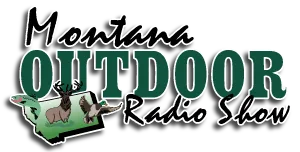BRETT FRENCH | bfrench@billingsgazette.com
More than 3,300 elk are estimated to roam the Crazy Mountains in Hunting District 315, and in three days of scouring high and low during the archery season my buddy and I never saw one.
We saw old scat, tracks and even trees rubbed clean of bark by bulls’ antlers, numerous grouse and one doe deer, but no elk.
There are plenty of reasons for such a strike out — poor scouting and bad tactics being just two of them. Yet the habitat looked great, with plenty of food and water in an area where vehicle traffic was restricted.
Where have all the elk gone?
Unfortunately, this wasn’t my first flop while mountain elk hunting. So, it’s very likely I’m just a bad hunter. Other hunters have told me they know folks who annually fill their tags, partly because they know an area so well, they can pattern the elk’s movements.
Considering the state has an estimated 157,300 elk — more than 40% of which are in southwestern Montana’s Region 3 where the Crazies are located — why didn’t we even see a single animal?
I also often hunt elk in a district outside of western Montana’s mountains that boasts one of the highest populations of elk in the state. Likewise, it’s rare to see any elk during the hunting season except on private lands.
All of this prompted several questions, and a couple of folks were kind enough to lend me their expertise and thoughts as we near the general big game season opener for rifle hunters on Oct. 25. The season, which includes deer hunting, extends through Nov. 30.
Blake Henning, chief conservation officer for the Rocky Mountain Elk Foundation, noted the questions I raised have been contemplated by members of his Missoula-based conservation organization.
“These are questions that we talk about a lot here,” he said. “They’re on the top of our minds with the challenges around elk management and elk hunting that are going on. So they’re absolutely pertinent.”
There’s actually more elk
As a Montana native, in the 1960s and 70s we only hunted elk in the mountains. There were no elk on the plains. According to my father’s tales, it was the same for him in the 1940s and 50s. He would regularly hike through knee-deep mountain snows during the elk hunting season in the Little Belt, Gallatin and Madison ranges. So, where are the elk now?
Justin Gude, FWP’s Research & Technical Services Section chief, said despite my perceptions there are three times, or more, elk in western Montana’s mountains than in those past decades.
“On the other hand, research and monitoring in many partially migratory herds in western Montana over the last couple of decades has clearly shown that public hunter access to elk is the most important driver of elk distribution and habitat selection during hunting seasons and winter,” Gude wrote in an email. “Elk select areas with less hunter access. The strongest predictor is land that does not allow public hunting, but on public land elk also select areas further from open motorized roads and access points.
“That said, in many areas we have still found ample distribution of elk on lands with public hunting access during hunting season and winter, even though individual elk prefer lands without hunter access.”
What about logging?
Logging was a big driver of Montana’s economy in the post-World War II era and before. Logging roads cut into the mountains provided hunter access and also allowed undergrowth to thrive after large trees were removed. Since these early heydays, national forest logging has declined.
Gude noted logging has been found to “increase forage biomass for elk, especially relatively soon after logging occurs (within ~5 years), which helps elk increase body mass during spring and summer and therefore maintain pregnancy over winter.”
More active forest management is something the Rocky Mountain Elk Foundation has been urging, Henning said. This includes the use of prescribed burns.
The downside is that, as mentioned, logging roads provide easier hunter access which increases hunting pressure “which negatively affects elk distribution during hunting season,” Gude said.
Often in the past, when logging projects were proposed, one of the concerns cited was the loss of elk security habitat.
“The security habitat concept was created in the 1970s-80s,” Gude explained. “The intent was to create habitat that would maintain bull elk distribution on public lands under an over-the-counter general season, without increasing bull harvest rates to the point that the season would need to become limited entry.
“The concept can still apply to bull elk hunting, as well as to antlerless elk hunting in some areas, which has proliferated since the concept was created (i.e., there was not much antlerless hunting opportunity at all during the time that security habitat was first defined).
“In research on this subject in the last couple of decades, we have still found that bull and cow elk avoid open motorized routes during hunting season. But the impact of canopy cover and dense forest that we have observed is less than what was estimated in the 1970s-80s, in the sense that elk will use areas further from open motorized routes even at lower canopy cover or forest density. So, logging can maintain security habitat for elk, depending on where it occurs and how routes are managed.”
Gude qualified the past research with this statement.
“Just to be clear though, most of our understanding and studies over the last 20 years come from female elk, whereas hunters may tend to think more about male elk. In the few places with both collared female and male elk, male elk responses to hunter access were not as strong as female responses and proportionally more male elk stayed on public lands as compared to female elk.”
What about predators?
In 2016, FWP published its final report on a four-year study into elk survival and recruitment in the southern Bitterroot Valley. The study was prompted by a 25% decline in the region’s elk population between 2005 and 2009.
“Low recruitment and elk population declines raised concerns that an increasing carnivore population, and in particular, increasing wolf populations, may be reducing elk populations and hunting opportunities in the Bitterroot Valley,” the report noted.
Instead, the researchers, which included Gude, found mountain lions were causing more elk calf mortality than wolves in the summer and winter.
Since that study, predator numbers have grown as wolves have taken up residence in more areas, and grizzly bear and black bear populations have swelled. Mountain lions are also “thriving once again in Montana,” according to FWP, reoccupying much of their historic range.
Two years of trend monitoring in west-central Montana resulted in FWP estimating a mountain lion population of around 2,500 animals just in that area.
Despite more predators on the landscape, Gude said FWP has “not found any consistent patterns in elk movement responses to predation. We have found effects in some areas, but not in others, and the strength and direction of effects varies,” he explained. “So, there is not a clear pattern of elk moving to lower elevation habitat due to predators.”
Henning said the presence of more predators could keep elk moving more than in past decades. He also noted there are a lot more people in the woods than ever before.
“You’ve got hikers and bikers and berry pickers and mushroom pickers,” he said, all of which could work to push elk to less traveled areas.
A possible encounter with a grizzly bear has also prompted Henning, and other hunters, to look elsewhere for elk.
“I’m looking in different places where griz are not, or you don’t think they are at this point,” he said.
What about drought?
At the same time large logging projects faded from western Montana, heavy snowfall has also become less common. Mountains now see more moisture in the form of rain. Drought has also struck some mountainous areas, including along the Blackfoot River drainage this summer.
Given these climatic changes, are elk finding less food in the mountains?
Gude said annual changes in precipitation undoubtedly have a “large effect on the amount and quality of forage for elk” which is important in late summer and early fall because it is “directly correlated to overwinter body condition, maintaining pregnancy, and birth rates the following spring.”
However, “Because forage during this critical time varies annually, and elk can move to find forage, we have not seen an overall decline in elk herd productivity in many areas.
“Forage quantity and quality is also greatly affected by many other factors,” including logging, fire which can spark new green growth, and even disturbances such as tree die-offs during pine beetle infestations, Gude noted.
Although forage can increase and decline due to all of these factors, FWP doesn’t “have a quantitative estimate of how much forage has changed over time because the methods we have to measure large-scale changes are relatively new (e.g., satellite imagery based products).”
In Wyoming, collared elk studies have shown some herds remain loyal to historic migration routes into the high county in and surrounding Yellowstone National Park. This is called “surfing the green wave,” as elk, mule deer and pronghorns move up in elevation in the spring to feed on more nutritious young plant shoots.
However, the studies have also shown some elk taking up residence on irrigated agricultural fields, preferring to avoid the long hikes and instead dine on planted crops, much to landowners’ irritation.
“We’re working hard here to kind of figure out how to work with private landowners so elk aren’t something super negative for them,” Henning said. “How can we help them live with elk and get hunters more access and opportunity to manage those herds?”
Private land elk
Sitting on a mountainside, using binoculars to scan the open prairie below, it can be frustrating for a hunter to see a herd of elk sunbathing in the heat of the fall day. After all, we had been taught that elk – with their thick winter coats – would be hiding in shady, cool spots as well as avoiding open areas. That’s not always the case.
“The most important and strongest predictor of elk habitat selection and distribution during hunting seasons is hunter access and hunting pressure,” Gude said. “This has been a consistent result across the 30-plus herds we have studied in recent decades.
“Private landowner decisions therefore have a big influence on elk distribution during hunting seasons in herds that have mixed ownership fall and winter ranges,” he added. “However, there are still ample elk that use public land fall and winter ranges. For elk using these areas during hunting seasons, consistently we have found that they avoid open motorized routes and access points.”
So the elk are out there, spread across Montana in greater numbers than in decades. But there are also more hunters crowding the trailheads and woods, and they are hunting for more days than in years past.
Lots of elk and hunters
In 2024, more than 111,900 elk hunters (20,000 of which were nonresidents) spent more than 1.1 million days (an average of about 10 days per hunter) in search of elk.
This resulted in a harvest of more than 28,100 elk, according to Montana Fish, Wildlife & Parks’ estimates.
For comparison, in 2004 – 20 years earlier — an estimated 106,800 hunters (15,300 of which were nonresidents) killed more than 23,300 elk. So 5,000 more hunters, most of them nonresidents, killed almost 5,000 more elk.
Despite so many hours in the woods, only about 18% of the total elk population was harvested in 2024 with roughly one-quarter of the hunters filling their tags, although some may have filled more than one elk tag.
More elk were taken in Region 3 — 11,795 — than in any other corner of the state. Many of those animals were killed in hunting districts on both sides of the Madison Valley.
However, there are other hunting districts spread across the state that stood out for high harvest numbers, as well. The common theme among the 11 districts with a 2024 elk harvest of more than 400 animals was hunter effort, or more hunters out for several days, Gude said.
“The other commonality is that they all offer very liberal antlerless hunting opportunity during the general season, late season, or both,” he added. “In many of those (hunting districts), there is antlerless hunting opportunity on the general license, and many of them have over the counter B licenses or large numbers of limited draw antlerless licenses.”
If you’re interested in analyzing the numbers, FWP’s harvest reports can be found online at https://myfwp.mt.gov/fwpPub/harvestReports.
So, what’s the takeaway?
At an elk summit the Rocky Mountain Elk Foundation held in August, Henning said wildlife biologists from across the West talked about how each state is dealing with its own, unique politics, culture and other influences that affect their elk management strategies.
“All these big elk states have their challenges, and nearly all of them are seeing challenges around private lands,” he said.
Given all this information, I should be hunting in one of the districts near the Madison Valley and hike far from any roads. We tried that one year and my buddy scored his first bull. I never saw an elk.
I’ve tried the shoulder seasons, too — when elk can be hunted after the general season. My thinking was that with fewer people out, and more snow on the ground, my odds may increase. We did see elk but never could catch up to them after a coyote charged the band and they ran off.
As a result, in roughly 40 years of elk hunting, I’ve only filled my tag twice. It’s not like I’ve turned down shots in hopes of finding a trophy bull. Instead, both tags were notched after shooting a cow elk.
If there’s such a thing as an elk curse, I may be suffering. Stay far away from me this hunting season. It may be contagious. Good luck.



